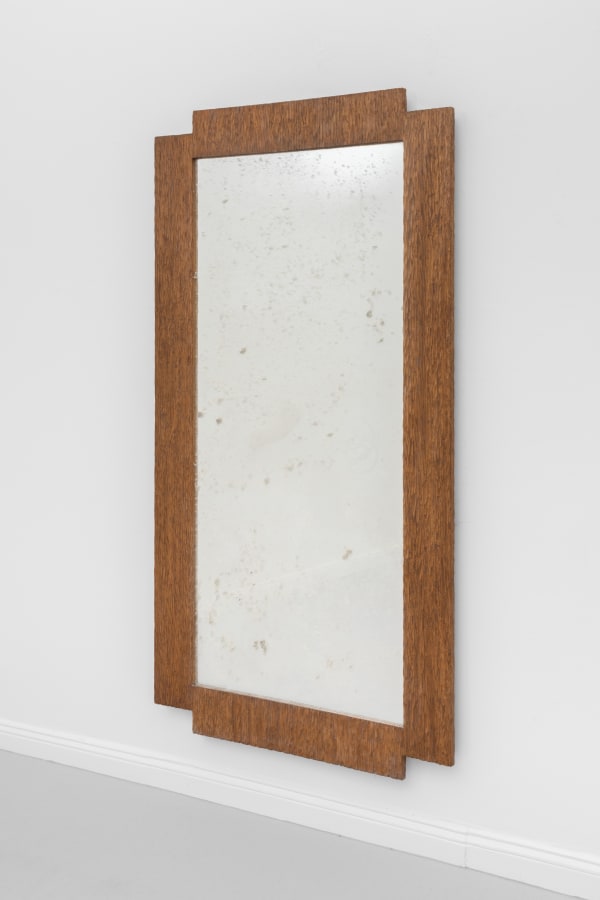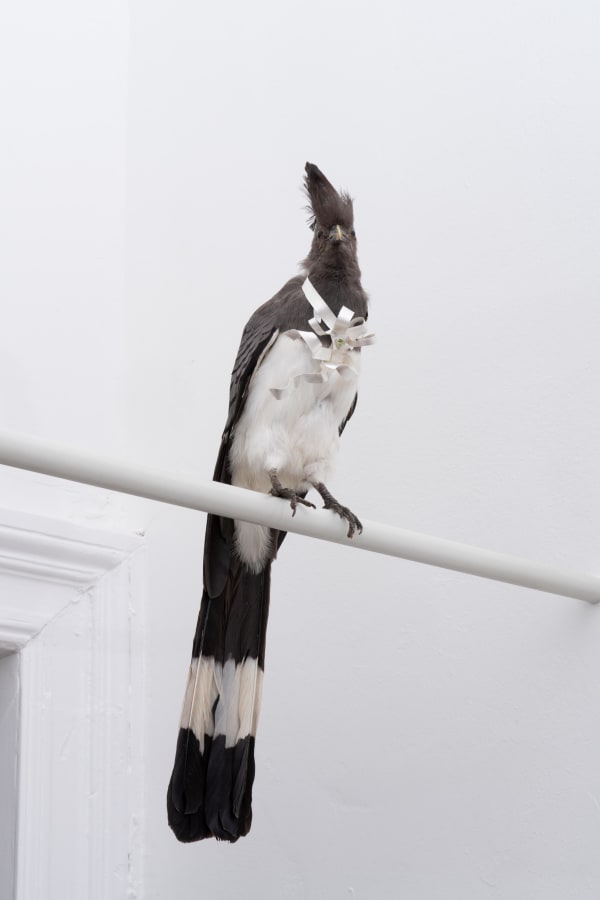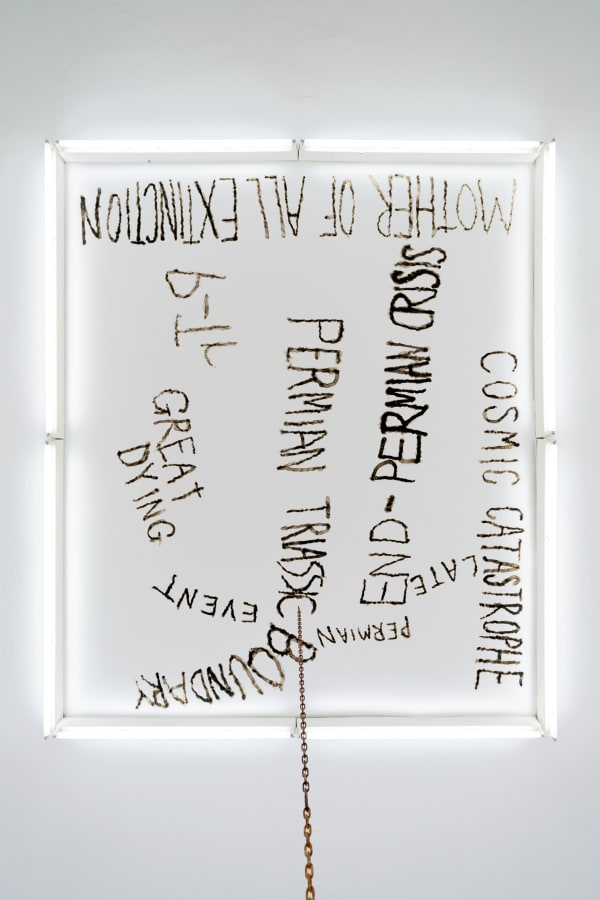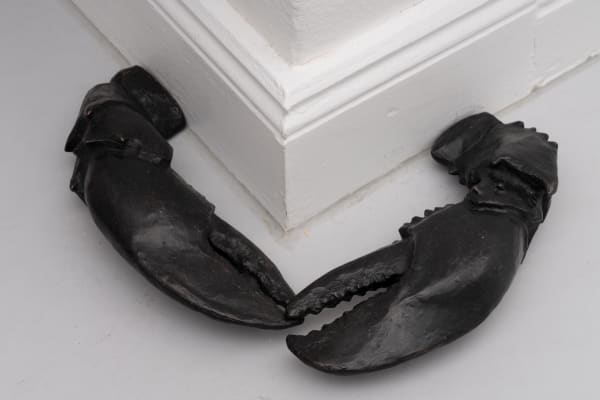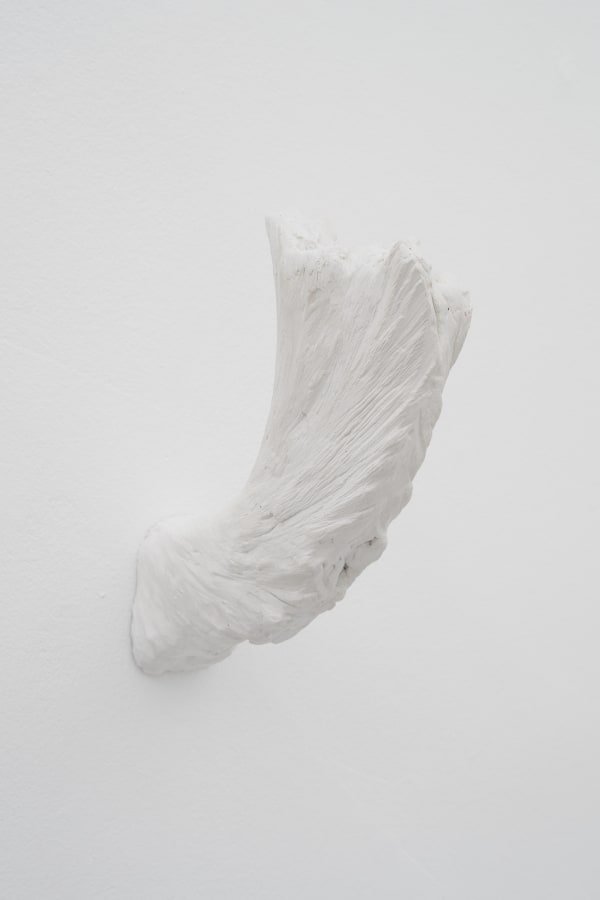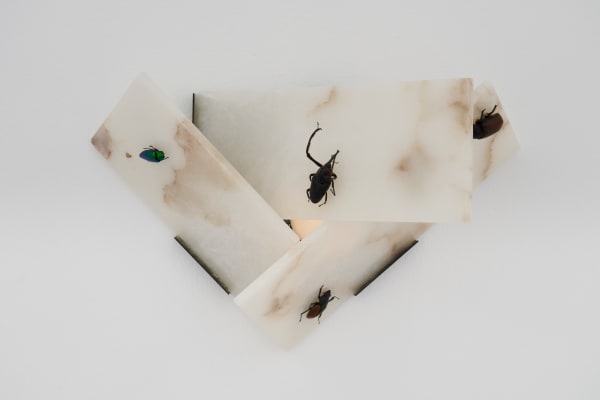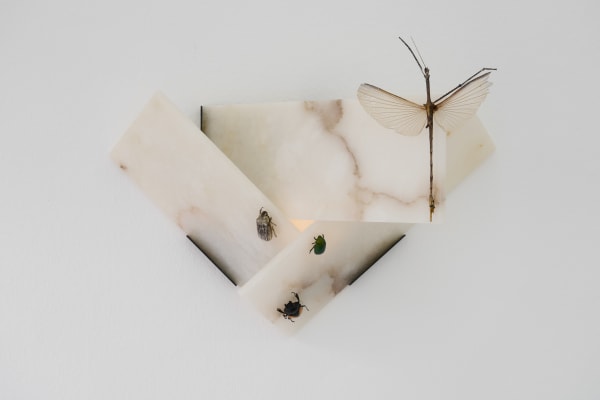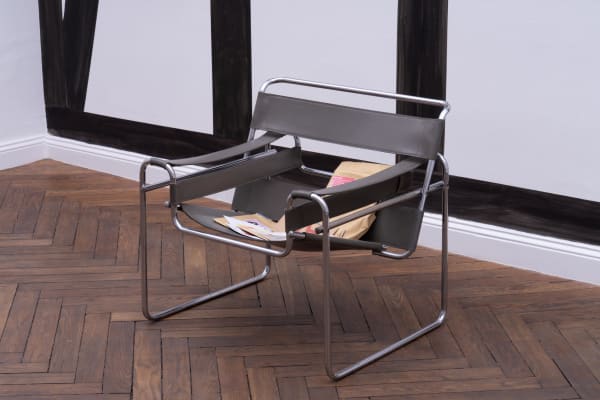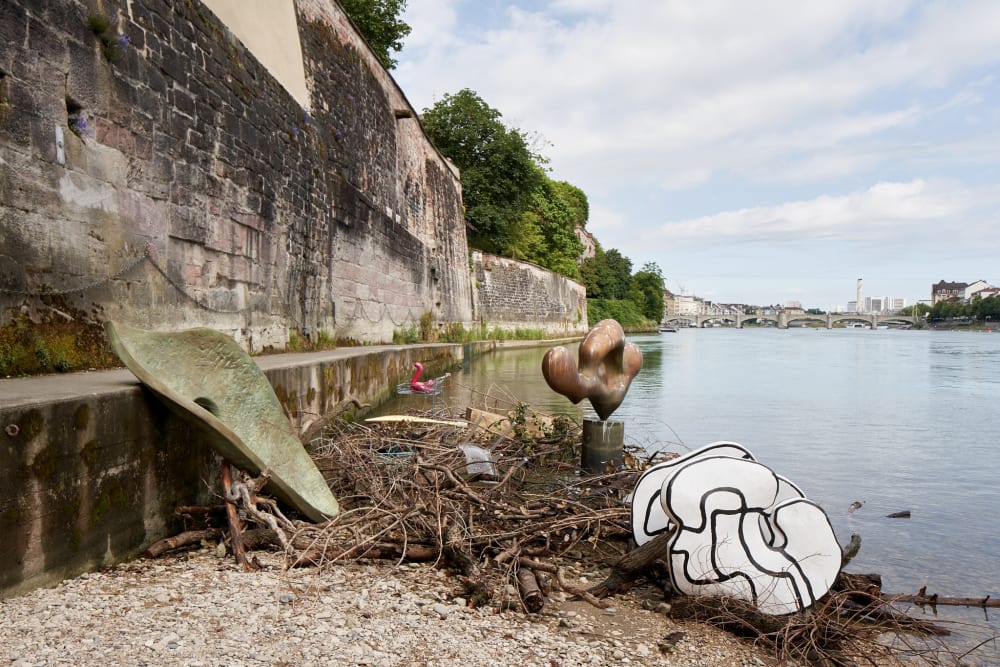LORE: Maria Loboda
-
Introduction
Lore may refer to a personal backstory or a more encompassing history; it could be real or imagined, full of idiosyncrasies or as old as time itself, foundational to us all. Related to ‘folklore’, ‘lore’ is a body of collective knowledge and traditions that is often passed on orally – it is myths and legends, beliefs and rituals, habits and customs. It is what people make, or tell, the actions they take. Originating from the Old English word for 'instruction', and related to the German ‘Lehre’ (teaching), it prompts us to seek out the lessons that can be gleaned from it.
A constellation of new and existing sculptural works and installations, Maria Loboda’s Lore is a gnarled tale: one that takes time, or may not be possible, to fully unravel. The passages we encounter are at turns intimate and inviting and at others uneasy and enigmatic: a cozy, dim interior with medieval flourishes, walls bedecked in mock Tudor half-timbering (Pearly, Ashy, Thorny like Bliss or Worry, 2025). Like a witch’s house of fairytales, we enter into it, perhaps warily, to discover what has collected in its shadows; we notice, gradually, the signs of decay and cryptic ciphers, the writing on the wall.
An indiscernible presence can be felt in mysterious patterns and stray, loose strands. Collections of unpaid bills left to pile up on the furniture appear to speak of neglect, absence, or everyday nuisances. They end up telling us something more – though just as murky. Something of discarded contexts, of themes, materials and elements that are picked up again and again, each time getting pulled and contorted into strange new shapes. We might wonder why such minutiae are necessary to the telling of this story, as they seem to lead us astray, taking abrupt turns or plummeting further into entangled labyrinths. This is the nature of the story’s narrator: unpredictable, elusive, a practiced spinner of tales that both slip through the fingers and coil tightly around them. Their words, ashy and brittle, turn to dust, dispersing through the air and sticking to every surface with a residue too stubborn to remove. Fragments harden into narrative threads that get knotted together: like cobwebs huddled in the darkened corners of life’s uncomfortable truths and deceptions, becoming momentarily illuminated, yet remaining caught in the haziness of the unknowable.
A potential narrative framework is set by a curious appendage: a plaster goat’s tail is attached to the wall, becoming a part of the physical frame of the space. Young Satyr Turning to Look at His Tail (2017), an oddly descriptive title taken from a Roman copy of a Greek sculpture, makes explicit reference to the mythological nature spirit and known mischief-maker. Yet the twisting body that it apparently belongs to is otherwise not clearly defined. Instead, through the placement of the tail, the space itself is turned into the mythic creature; the satyr’s presence, though nebulous, is grounded in the here and now. With the trickster looming, the truth of the matter is likely hidden, or at least destabilized – maybe nothing is what it seems after all.
Throughout the various rooms, wooden crates of glass vessels are stacked in a seemingly transitory display in Vase-mania/Urn Burial (2025). It reflects the so-called mania around collecting classical Greek and Roman vases in 18th century England that was propelled by archaeological discoveries during this turbulent time. As a result of the desire, and insatiability, for the status and appearance of knowledge, taste and sophistication afforded by displaying such objects in the home, imitations became mass produced for wider availability. The translucent objects displayed here, however, are modernist designs based on Scandinavian and Polish vases from the 1950-60s. They seem especially fragile, as bulbous teardrops run in long streams down their bodies: a fleeting and ambiguous, potentially volatile, outpouring of emotion frozen in glass. Weeping as though in mourning, the vessels are anthropomorphized and imparted with an almost funerary character, like urns. The preoccupation of the mysterious collector might be something indefinable, that which cannot be grasped – a fascination for questions of existence. This act of collecting is ritualistic in nature.
Insects swarm out and over fragmented, geometric wall lamps made of ghostly alabaster – after those by French Art Deco designer Pierre Chareau – in The Chosen (2019). The taxidermied insects’ appearance might seem to indicate the abandonment and erosion of a once elegant domestic interior, though such rare and beautiful creatures prove a rather unlikely intrusion. The work’s title lends a spiritual or mystical undertone, while illustrating the basic instinct of insects that are drawn to light, sometimes at their own peril – a kind of sacrifice. The lamps’ illuminated white panels become altars for these carefully chosen specimens, or tombs of a kind.
Like a siren song, we’re pulled in by something deceptively alluring, possibly dangerous. A lush honey-colored glass object – a delightfully sweet offering, though perhaps pesky in its stickiness – hangs in a droplet over a Japanese irori fireplace in the middle of the room. The potential warmth that might be found around the hearth, as a central gathering place in the home – where stories and conversation are shared – is extinguished by the ominous presence of large writing in soot on the ceiling above it. The words left behind, a sort of smoke signal, could be a warning, a threat, a reminder of something already transpired or part of a cycle that will inevitably repeat. A sharp odor, acrid and charred, fills the space as tangibly as the dust that spreads over it.
As if collected over years of neglect, a heavy coating of dust settles onto a mirror in a frame inspired by another Art Deco designer, the reclusive Jean Michel Frank. In Son of the Witch (2025), the mirror’s surface is marked by a single, mysterious hand-drawn figure: a mathematical knot. Graceful, and at times decorative, knots are laden with symbolism: suggestive, for example, of unity, the cycle of life, or forms found in nature. Recorded so unceremoniously in dust, this weighty and intricate marking, despite any suggestion of eternity, could be gently wiped or blown away in an instant, scattering into thin air. With its complexity left untethered, it slips between the transcendental and the everyday. In mathematical knot theory, there are only loops and no ends — only points of intersection, of infinite connection, however loosely held.
In the traces of life that linger here, there is a sense of continuity and transformation, of timelessness, as well as precarity and obscurity: like a cocktail glass set carelessly atop the pristine pages of an open coffee table book. Beyond what is collected, the act of collecting – with an ancient cultural history of its own – can tell us something not just about ourselves, but also our shared motivations, emotions, desires, values, knowledge, and codes. In what is preserved or transported, we might look for where meaning is hidden, remains impenetrable, gets displaced or emptied out over time. No matter its shape, Lore circulates behind and around, dense like honey or diffuse like dust – like breath carried by word of mouth.
Text by Julianne Cordray
-
Installation Views
-
Works
-
Inquire about works by Maria Loboda
-
Artists on view
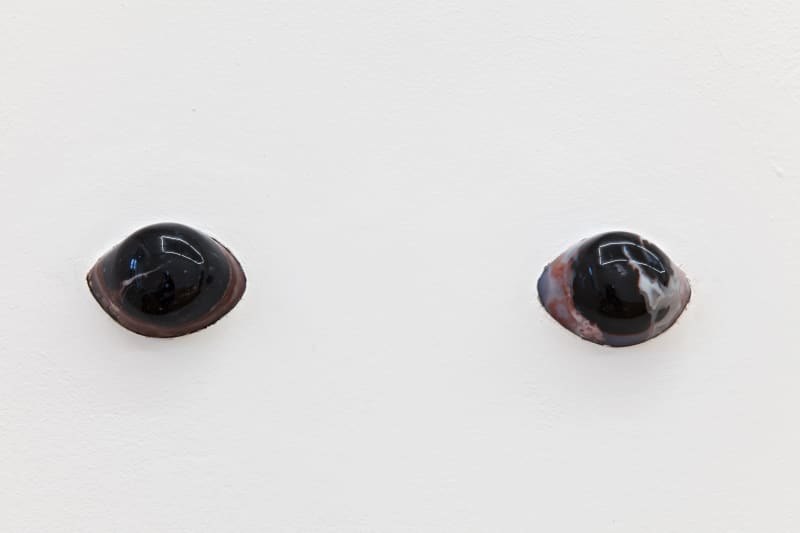

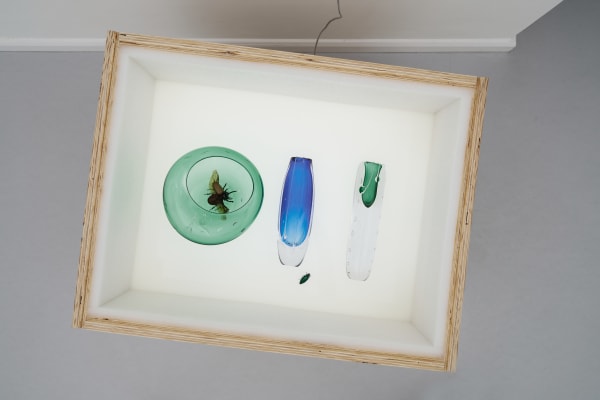




![Maria Loboda “The air was hazy, mellow and saturated with the smell of scorched honey and cold ash swirling together… [missing text] … take the air or dust: to disappear. [missing text]” , 2025 Wooden fireplace, ashes, burned wood, iron chain vinyl letter 20 x 160 x 120 cm 7 7/8 x 63 x 47 1/4 in](https://artlogic-res.cloudinary.com/w_600,c_limit,f_auto,fl_lossy,q_auto/artlogicstorage/galeriethomasschulte/images/view/d0177b795be13e5f340ec98f4b0a2fb8j/galeriethomasschulte-maria-loboda-the-air-was-hazy-mellow-and-saturated-with-the-smell-of-scorched-honey-and-cold-ash-swirling-together-missing-text-take-the-air-or-dust-t.jpg)
